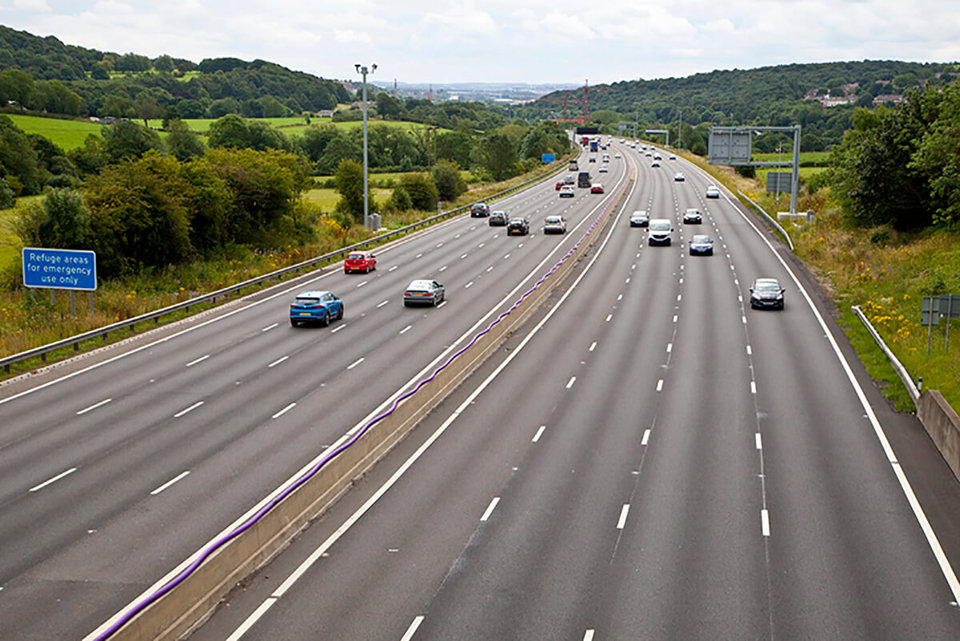MPs have launched an enquiry into ‘all-lane running’ to evaluate its effectiveness in managing capacity and congestion, and its impact on road safety.
So-called ‘smart motorways’ are designed to increase capacity and cut congestion through the introduction of variable speed limits and the use of the hard shoulder as a running lane, particularly during busy periods.
But, with the use of all-lane running set to expand, the Transport Select Committee wants to assess their effectiveness and their safety record.
The concept was originally piloted on a stretch of the M42 in the Midlands, and ‘smart’ sections of motorway can now be found on the M1, M4, M5, M6 and M25.
A majority (56%) of motorists say they are an effective way of increasing capacity, according to the RAC Report on Motoring 2015.
However, the motoring organisation has raised concerns over the safety of the newly introduced ‘all-lane-running’ configuration of smart motorways.
In the ‘dynamic hard shoulder’ configuration – used on the M42 pilot and the majority of other smart motorways now in operation – the hard shoulder is only opened for use as an extra running lane at busy times when extra capacity is needed, while under the all-lane-running configuration, the hard shoulder is permanently converted into an extra lane.
The RAC says that dynamic hard shoulder smart motorways have been in use for some time, and have been shown to be “significantly safer” than conventional motorways with three lanes and a hard shoulder. This is due to a combination of reasons including, close monitoring by Highways England through CCTV, variable speed limits that slow traffic down in busy periods and easy-to-reach Emergency Refuge Areas (ERAs) for use when users break down or are involved in an incident when the hard shoulder is in use as a running lane.
On the M42, for example, ERAs are spaced between 500m and 800m apart. But on later dynamic hard shoulder configuration schemes and on the new all-lane- running sections, the ERAs are further apart at distances of up to 2.5km.
“In this situation, a driver whose vehicle suffers a catastrophic failure will have little alternative to stopping in the inside running lane and waiting for Highways England to spot them and close the lane to traffic,” the RAC says.
On a motorway, with a dynamic hard shoulder, the inside running lane reverts to a hard shoulder and on all-lanes running, red crosses are displayed over the inside lane to instruct drivers to move over to the next lane.
The RAC continues: “Unfortunately, early experience suggests other drivers are less inclined to obey these lane closure signs on an all-lanes-running section of motorway than when the hard shoulder is closed to traffic on a smart motorway with the dynamic hard shoulder configuration.
“This places the casualty vehicle, its occupants and those providing assistance – the emergency services or roadside assistance providers – at greater risk.”
All new sections of smart motorway are expected to be based on the all-lane-running configuration.
The RAC has called on Highways England to monitor accident and casualty rates closely on those sections of smart motorway where all-lanes-running is in use and to consider reconfiguring these and planned sections of all-lanes-running motorway to have a dynamic hard shoulder.
A fifth (20%) of drivers said that they believe that the dynamic hard shoulder configuration is less safe than a conventional motorway with a permanent hard shoulder, and a slightly higher percentage (25%) took a similar view for the all-lanes-running variant compared to a conventional motorway.
The Transport Select Committee is particularly interested in receiving evidence on:
· the impact of all-lane running on the safety of motorway users
· the effectiveness of all-lane running in managing capacity and congestion on the Strategic Road Network
· the impact on motorway maintenance
· incident rates, the management of incidents, vehicle recovery, and the provision of refuge areas where all-lane running is used
· how policy on all-lane running should evolve, whether application of the policy should be expanded, and whether the policy is sustainable
· the implications of the policy for future motorway widening schemes
· the extent to which road users understand and comply with signs where all-lane running is in operation, and the changes that are needed in driver education and behaviour
For further information on the consultation, click here.




















Les Hammond - 30/11/2015 10:34
Where the 'dynamic hard shoulder configuration' has been employed I cannot understand why the Red Cross "do not go any further in this lane" has been installed without the accompanying flashing (side to side) lights, surely this would draw attention to the change as it always has in the past?